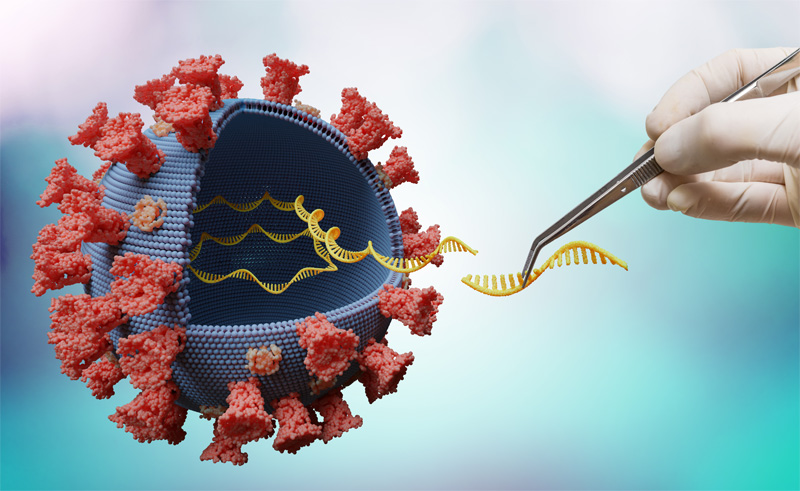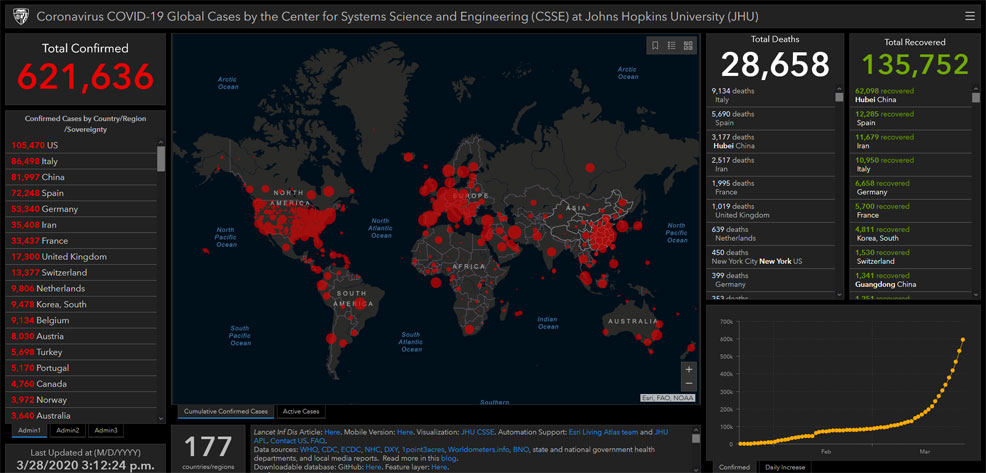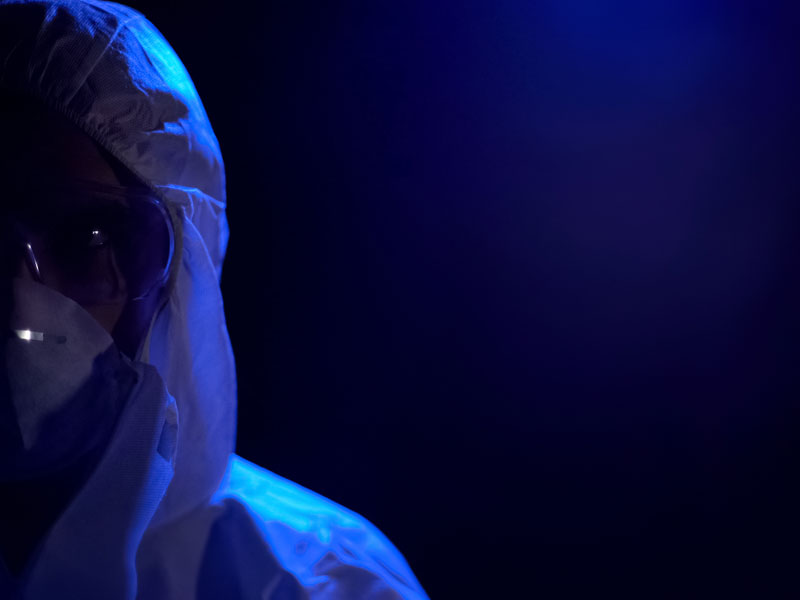
28th March 2020 COVID-19 is natural, not man-made Scientists report that the novel SARS-CoV-2 virus – which causes the COVID-19 disease and is responsible for the current global pandemic – originated naturally, and not otherwise.
The novel SARS-CoV-2 coronavirus that emerged in the city of Wuhan, China, last year and has since caused a pandemic affecting 190 other countries is the product of natural evolution, according to new findings in the journal Nature Medicine. Detailed analysis of public genome sequence data from SARS-CoV-2 and related viruses found no evidence that the virus was made in a laboratory or otherwise engineered. "By comparing available genome sequence data for known coronavirus strains, we can firmly determine that SARS-CoV-2 originated through natural processes," said Kristian Andersen, PhD, associate professor of immunology and microbiology at Scripps Research, California, and corresponding author on the paper. Coronaviruses are a large family of viruses that can cause illnesses ranging widely in severity. The first known severe illness caused by a coronavirus emerged with the 2003 Severe Acute Respiratory Syndrome (SARS) epidemic in China. A second outbreak of severe illness began in 2012 in Saudi Arabia with the Middle East Respiratory Syndrome (MERS). On 31st December 2019, Chinese authorities alerted the World Health Organisation of an outbreak of a novel strain of coronavirus causing severe illness, subsequently named SARS-CoV-2. As of today, more than 620,000 COVID-19 cases have been documented, although many more mild cases are likely to have gone undiagnosed. The virus has killed nearly 29,000 people. The total number of people in the world facing quarantine or some form of movement restriction now exceeds 2.6 billion, a third of the global population.
Andersen and his team at Scripps Research analysed the genetic template for spike proteins – protrusions on the outside of the virus that it uses to grab and penetrate the outer walls of human and animal cells. More specifically, they focused on two important features of the spike protein: the receptor-binding domain (RBD), a kind of grappling hook that grips onto host cells, and the cleavage site, a molecular can opener that allows the virus to crack open and enter host cells. The scientists found that the RBD portion of the SARS-CoV-2 spike proteins had evolved to effectively target a molecular feature on the outside of human cells called ACE2, a receptor involved in regulating blood pressure. The SARS-CoV-2 spike protein was so efficient at binding to human cells, in fact, that the scientists concluded it would have to be the result of natural selection and not the product of genetic engineering. This evidence for natural evolution was supported by data on the virus backbone – its overall molecular structure. If someone were seeking to engineer a new coronavirus as a pathogen, they would have constructed it from the backbone of a virus already known to cause illness. But the scientists found that the SARS-CoV-2 backbone differed substantially from those of known coronaviruses and mostly resembled related viruses found in bats and pangolins. "These two features of the virus – the mutations in the RBD portion of the spike protein and its distinct backbone – rules out laboratory manipulation as a potential origin for SARS-CoV-2" said Andersen. The scientists' findings are "crucially important to bring an evidence-based view to the rumours that have been circulating about the origins of the virus (SARS-CoV-2) causing COVID-19," said Dr. Josie Golding, PhD, epidemics lead at the Wellcome Trust, UK. "They conclude that the virus is a product of natural evolution, ending any speculation about deliberate genetic engineering."
Based on their genomic sequencing analysis, Andersen's team concluded that the most likely origins for SARS-CoV-2 followed one of two possible scenarios. In one scenario, the virus evolved to its current pathogenic state through natural selection in a non-human host and then jumped to humans. This is how previous coronavirus outbreaks have emerged, with humans contracting the virus after direct exposure to civets (SARS) and camels (MERS). The most likely reservoir for SARS-CoV-2 is bats, the researchers believe. No documented cases of direct bat-to-human transmission exist, however, suggesting that an intermediate host was likely involved between bats and humans. In this scenario, both distinctive features of SARS-CoV-2's spike protein would have evolved to their current state prior to entering humans. In this case, the current epidemic would probably have emerged rapidly as soon as humans were infected, as the virus would have already evolved the features needed to make it pathogenic and able to spread quickly between people. In the other proposed scenario, a non-pathogenic version of the virus jumped from an animal host into humans and then evolved to its current pathogenic state within the human population. For instance, some coronaviruses from pangolins – armadillo-like mammals found in Asia and Africa – have an RBD structure very similar to that of SARS-CoV-2. A coronavirus from a pangolin could possibly have been transmitted to a human, either directly or through an intermediary host such as civets or ferrets. Then the other distinct spike protein characteristic of SARS-CoV-2, the cleavage site, could have evolved within a human host, possibly via limited undetected circulation in the human population prior to the beginning of the epidemic. The researchers found that the SARS-CoV-2 cleavage site appears similar to the cleavage sites of strains of bird flu that has been shown to transmit easily between people. SARS-CoV-2 could have evolved such a virulent cleavage site in human cells and soon kicked off the current epidemic, as the coronavirus would possibly have become far more capable of spreading between people. Study co-author, Andrew Rambaut, warns that if SARS-CoV-2 entered humans in its current pathogenic form from an animal source, it raises the probability of future outbreaks, as the illness-causing strain of the virus could still be circulating in the animal population and might once again jump into humans. The chances are lower of a non-pathogenic coronavirus entering the human population and then evolving properties similar to SARS-CoV-2. For now, however, the possibility of SARS-CoV-2 being designed and engineered by humans in a laboratory can be ruled out. That isn't to say that such a scenario won't be possible in the future, of course, given the progress of biotechnology and its increasing accessibility to small groups and even individuals. In a relatively recent video game, Tom Clancy's The Division, players experience such a catastrophe and are tasked with exploring a future New York City, devasted in the aftermath of a "dollar flu" pandemic.
Comments »
If you enjoyed this article, please consider sharing it:
|









